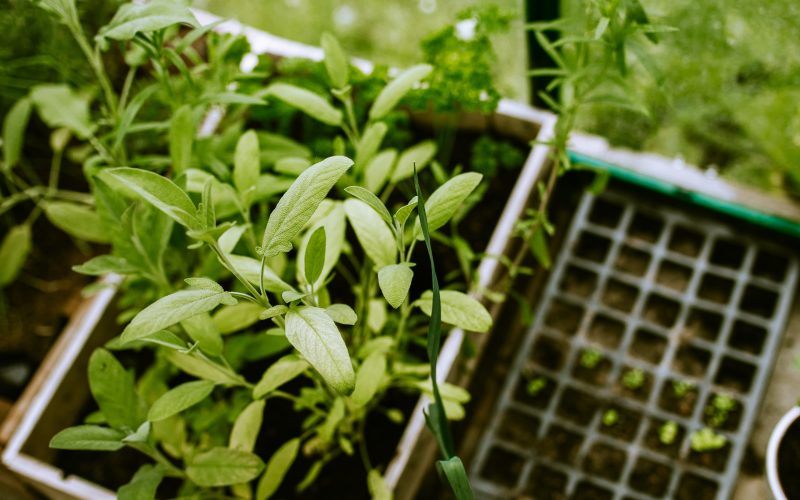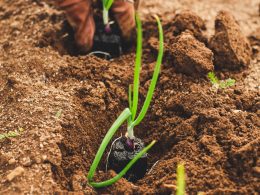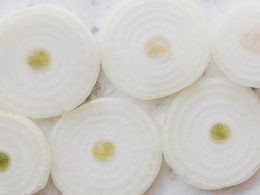As urbanization continues to rise, cities are becoming greener and more sustainable. One of the most innovative ways to transform urban landscapes is through the power of edible gardens. Not only do they provide fresh produce for city dwellers, but they also have a positive impact on the environment and community wellbeing. In this blog post, we will explore the benefits of edible gardens, different types available, tips for starting and maintaining one at home or in public spaces as well as delicious recipes you can create from your garden harvests. So let’s dig in and discover how we can make our concrete jungles into food-producing paradises!
The Benefits of Edible Gardens
Edible gardens offer a multitude of benefits beyond just providing fresh produce. They are a sustainable and eco-friendly way to transform urban landscapes into green spaces that promote community wellbeing.
One significant benefit is the reduction in carbon footprint as locally grown fruits and vegetables eliminate the need for transportation, reducing greenhouse gas emissions. Edible gardens also help conserve water by using rainwater harvesting techniques, reducing the burden on city water supply.
Moreover, growing food at home or in public spaces promotes physical activity and encourages healthy eating habits. It’s an excellent opportunity for families to bond over gardening activities while enjoying fresh produce straight from their garden.
Additionally, edible gardens can be used as tools for educating children about environmental conservation, agriculture practices, and nutrition. Involving them in planting seeds and nurturing plants teaches them valuable life skills while fostering respect for nature.
Edible gardens foster community relations through shared activities such as gardening workshops or farmers markets where people can exchange ideas and produce while supporting local businesses.
Incorporating edible gardens into urban landscapes has numerous advantages ranging from promoting sustainability to enhancing mental health; they provide many opportunities for personal growth while contributing positively to our environment.
The Different Types of Edible Gardens
When it comes to edible gardens, there are a variety of types that you can choose from depending on your preferences and the space available. Here are some of the different types of edible gardens:
1. Container Gardens: These gardens are perfect for those who have limited outdoor space or live in apartments. You can grow herbs, vegetables, and fruits in pots or planters placed on balconies, patios, or windowsills.
2. Raised Bed Gardens: This type of garden is ideal for people with small yards who want to maximize their growing space. You can build raised beds using wood planks or bricks and fill them with soil to create an elevated garden.
3. Rooftop Gardens: If you live in a city where green spaces are scarce, consider starting a rooftop garden. They can be designed as container gardens or as more elaborate setups complete with irrigation systems and seating areas.
4. Vertical Gardens: These gardens allow you to grow plants vertically instead of horizontally by using trellises, poles, or hanging baskets attached to walls or fences.
5. Herb Gardens: A herb garden is essential for any cook who wants fresh herbs at their fingertips all year round! Herbs such as basil, thyme, rosemary and mint can be grown indoors (on window sills) outdoors (in containers) making them one of the most versatile edible gardening options out there!
No matter which type of edible garden you decide to go for – know that each option has its own unique benefits!
How to Start an Edible Garden
Starting an edible garden can be a fun and rewarding experience for anyone who wants to grow their own food. Here are some tips on how to get started:
1. Choose the Right Location: When selecting a location, make sure that your garden gets plenty of sunlight throughout the day. The ideal spot should also have good soil drainage and be close to a water source.
2. Decide What to Plant: Determine what you want to grow in your garden based on factors such as climate, soil type, and available space. Consider starting with easy-to-grow crops like tomatoes, lettuce or herbs.
3. Prepare the Soil: Before planting, it’s essential to prepare the soil by adding organic materials such as compost or manure.
4. Start Small: Starting small is always recommended when it comes to gardening especially if you’re just getting started with edible gardens.
5. Invest in Good Tools: Having quality tools will help make gardening tasks more comfortable and efficient while ensuring that your vegetables stay healthy.
Remember that patience is key when starting an edible garden; Rome was not built in a day! With time and effort invested into maintaining your homegrown vegetables, you will soon enjoy harvesting fresh produce from your backyard regularly!
Tips for Maintaining an Edible Garden
Maintaining an edible garden is not just about planting the seeds, watering them and waiting for the harvest. It requires consistent effort and care to ensure that your plants thrive throughout their growth cycle. Here are some tips to help you maintain a healthy and fruitful edible garden.
Firstly, it’s important to water your plants regularly. Depending on the climate in your area, you may need to water every day or every other day. Be sure not to overwater as this can stunt growth or lead to root rot.
Secondly, keep an eye out for pests and diseases that can affect your crops. Check your plants regularly for any signs of infestations or abnormalities such as yellowing leaves or discoloration. Use organic methods like neem oil or companion planting instead of harsh chemicals.
Thirdly, prune back excess foliage on fruit trees and bushes so they don’t become too heavy with fruit causing branches to snap under pressure.
Replenish soil nutrients by adding compost or natural fertilizers like fish emulsion at least twice a year – once before spring planting and then again mid-season when most of the growing occurs.
By following these simple tips for maintaining an edible garden, you’ll be rewarded with fresh produce all season long!
Recipes from the Garden
Recipes from the Garden:
One of the most rewarding aspects of having an edible garden is being able to enjoy fresh produce straight from your backyard. Whether it’s a salad made with homegrown lettuce, or a tomato pasta sauce using ripe tomatoes picked that morning, there’s something special about eating food you’ve grown yourself.
Here are some recipe ideas for incorporating your garden harvest into delicious meals:
1. Caprese Salad: Slice up fresh tomatoes and mozzarella cheese, then sprinkle with chopped basil leaves and drizzle with olive oil and balsamic vinegar.
2. Sautéed Greens: Pick your favorite leafy greens (such as spinach or kale) and sauté them in garlic and olive oil until wilted. Season with salt and pepper to taste.
3. Roasted Vegetables: Cut up any assortment of vegetables from the garden (such as eggplant, zucchini, peppers, etc.) into bite-sized pieces. Toss them in olive oil and roast in the oven until tender.
4. Pesto Pasta: Blend together fresh basil leaves, garlic cloves, pine nuts, parmesan cheese, and olive oil in a food processor until smooth. Serve over cooked pasta for a quick yet flavorful meal.
With just a little creativity in the kitchen (and some inspiration from your garden), you can transform simple ingredients into tasty dishes that both satisfy hunger cravings while nourishing your body!
Conclusion
Edible gardens are more than just a trend. They offer numerous benefits, including providing fresh and healthy produce, reducing carbon footprint, and transforming urban landscapes into vibrant and sustainable environments.
Starting an edible garden may seem daunting at first, but with the right tools and knowledge, anyone can create a thriving garden in their own backyard or even on their balcony. Remember to choose the type of edible garden that works best for your space and lifestyle, while also considering factors such as sunlight exposure and soil quality.
Maintaining an edible garden takes time and effort but it is all worth it when you harvest your very own vegetables or fruits! Incorporating harvested produce into delicious recipes is also rewarding. Plus eating from your own garden ensures that what you consume is fresh without any chemicals!
So why not join the movement towards creating beautiful urban landscapes filled with nourishing plants? Start planning your dream edible garden today!












